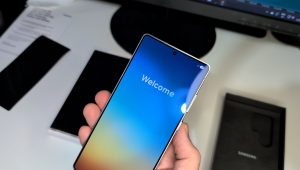 Google’s Android operating system is the mode widely used across the globe on mobile devices, but due to this popularity it’s a prime target for cyber criminal activities. So now do you keep Android device safe?
Google’s Android operating system is the mode widely used across the globe on mobile devices, but due to this popularity it’s a prime target for cyber criminal activities. So now do you keep Android device safe?
Trend Micro Australia has published the following security tweaks you can do to make sure that your device and the data in it is protected:
- Lock the screen – Enabling a screen unlock code will prevent an outsider—or a device thief—from accessing your mobile data, even if your phone gets stolen.
- Protect your data – Android virtually comes with pre-installed security measures that can be easily accessed and enabled from the security submenu. The Android security screen also includes an option to encrypt the device. Enabling this option will help protect sensitive information (like corporate data) stored in the device.
- Strengthen passwords and app permissions – Google does a fine job at synching their updates with Android devices. However, some manufacturers take a little more time to update. Remember to check the features that you allow the app to access, and don’t forget to use strong and unique passwords. Note that passwords can be cracked, and if you re-use your passwords, hackers can effortlessly guess the passwords on your other accounts.
- Security apps – it’s always a good idea to make use of security apps. An app that offers anti-theft features like remote wipe-out, tracking, and locking, as well as malware scanning and detection can help mitigate potential threats. [See how Mobile Security for Android Smartphones and Tablets can help you protect your device and improve device performance]
- Connect to secure networks – when you’re in a rush, or when there seems to be no other alternative network, it seems practical to connect to public Wi-Fi. But before you do, think twice. Unsecured Wi-Fi networks can be used to stage man-in-the-middle attacks where data can be intercepted by a third party.
- Avoid rooting or your device – Before rooting your Android device, consider the pros and cons first. While it allows you more control over your device, it could also allow unsigned apps, including malicious ones, access to your data. This also makes it difficult to patch and update your OS and apps, which could leave your device vulnerable.
- Download from official app stores – Downloading from third-party app stores is one of the easiest ways for any mobile device to get infected with malware. Limiting your apps to those from official app stores (like the Google Play app store) can lower the risks.
Get more Android security tips and info from http://www.trendmicro.com.au/vinfo/au/security/news/android



